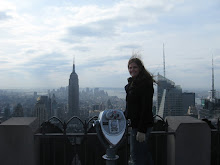A National Fish Hatchery. Did you ever know those existed? What about 70 of them? I may be oblivious but I had no idea there was one, let alone 70. Two of them are even located in Utah - Vernal to be exact. I would like some more history of those.
Mike and I wanted to go hiking so we asked about where to go. We were told to start at the National Fish Hatchery. So, we went. When we asked the worker about hikes in the area she said that before hiking we must start with a tour of the Leavenworth National Fish Hatchery. We probably could have argued, or skipped it, but we decided, 'What the heck.' And so we did.
What we learned:
Before Americans knew just how much their actions impacted the environment, specifically dams and fish, they built the Grand Coulee Dam on the Columbia River in 1933. They build the dam without realizing the effect it would have on the Salmon and other fish that lived in this river. Nowadays, dams are built with Fish Ladders, providing fish a way to still migrate the river, travel home, and spawn. Once the Grand Coulee Dam was built, the salmon migration along that river seized. People who relied upon the fish for food now had nothing to eat, so the government stepped in. They came up with the idea of fish hatcheries, and they put them in all of the areas affected by the dams (yes there are more than one that were built without Salmon Runs).
The Leavenworth fish hatchery was constructed in 1935. Just two years after construction of the dam began. (Obviously the need for food taught these Americans a quick lesson.) It covers 170 acres of land. They raise the Salmon until they are a certain age and then they release them into the wild.
You can learn more about the Leavenworth National Fish Hatchery here.
 |
| Baby Chinook Salmon and Coho Salmon |
 |
| There are where the baby Salmon are kept (isn't the background amazing?). |
 |
| The front of the Salmon pen that they are kept in before being released into the wild. (Another fish started to jump out of the water.) |
Then we ventured out for a hike (which turned out to be more of a walk) and disappointedly, we didn't see any bears. It was very beautiful though.
If you don't know a lot about Salmon, they hatch with no parents on gravel beds in rivers. Then they swim out to an open body of water where they grow. When they feel like it's time, they swim back up the river, to the place where they were born and they spawn. The unique thing is that after they spawn, they die. They just decide when it's their time. Some spawn after three years, some after 6, 7 or even 8.
 |
| Salmon returning home to the shallow river bed to spawn. |
While Mike and I were out hiking (walking) we saw some Salmon spawning in the river. I wanted so badly to wade out in there and catch us some Salmon.
 |
| More Salmon swimming in the river. |
 |
| And more Salmon. |





























No comments:
Post a Comment